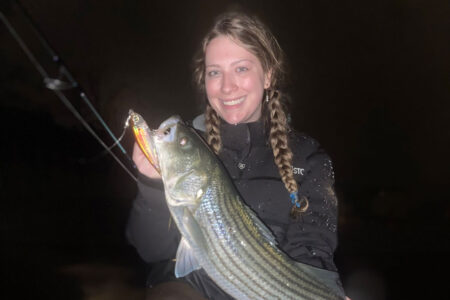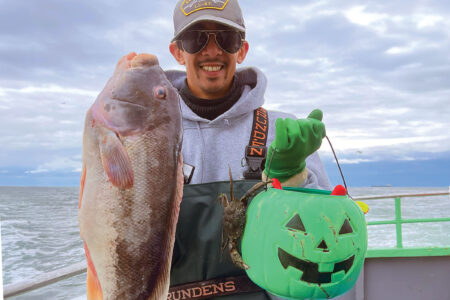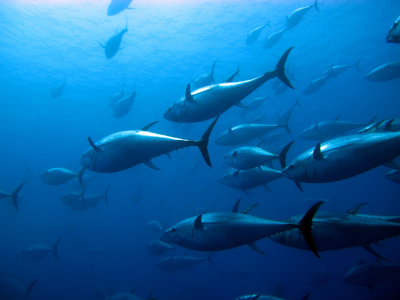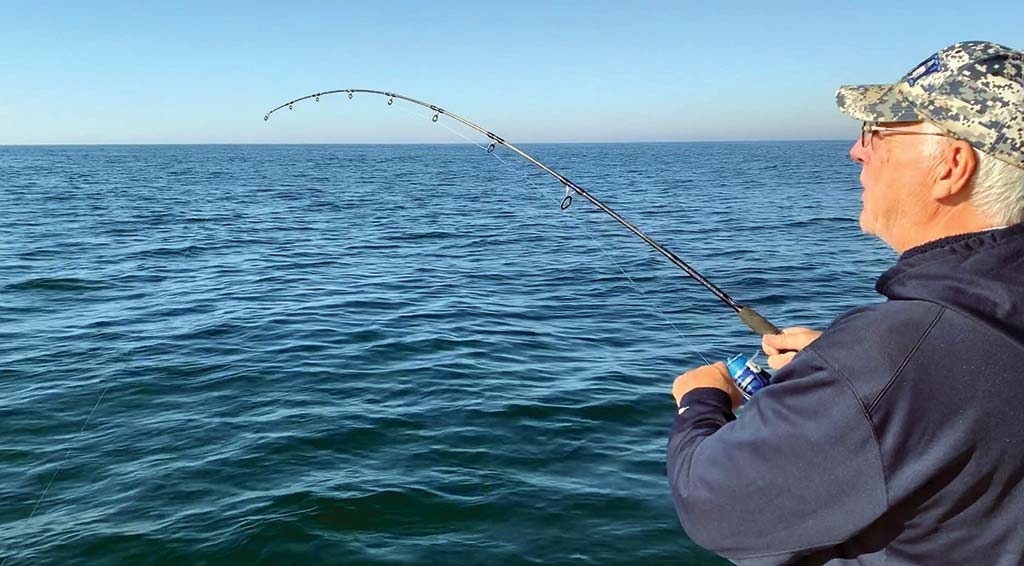
Wrecks are productive for one simple reason and it’s a no-brainer – that’s where the fish are!
To give this article some meaningful parameters, I’m going to focus the strategy and tactics to relatively “deepwater” locations, which includes any wreck, reef or submarine structure that’s in coastal water over 100-feet in depth. While you can employ some of the tactics detailed here at inshore reefs or wrecks, it will all come together when you select those locations that are in 17-fathoms or deeper, all the way out to wrecks that lie in 350-feet (55-fathoms) or more.
Strategy
Wreck fishing strategy is an analysis that factors in the time of the annual groundfish, pelagic and bait migration process, along with the current weather, water temps and sea conditions. Also factored in are the species that you seek on that particular day, the size, range and seaworthiness of your boat, and how far you are willing to travel in your attempt to make things happen. Successful wreck fishing entails a lot of thought before you ever leave the dock. It is more than just simply heading to some distant Lat/Long numbers, throwing down the anchor and bending the rods. With the proper planning, there are days when it can seem that easy, but usually the process requires a bit more work to insure the anticipated result. Part of the strategic planning process requires identifying a “cluster” of wrecks in a general four to five-mile area of focus, since it’s always a bad idea to target one well-known wreck and then realize after a long journey that another boat beat you to the spot and is anchored up over your preferred target.
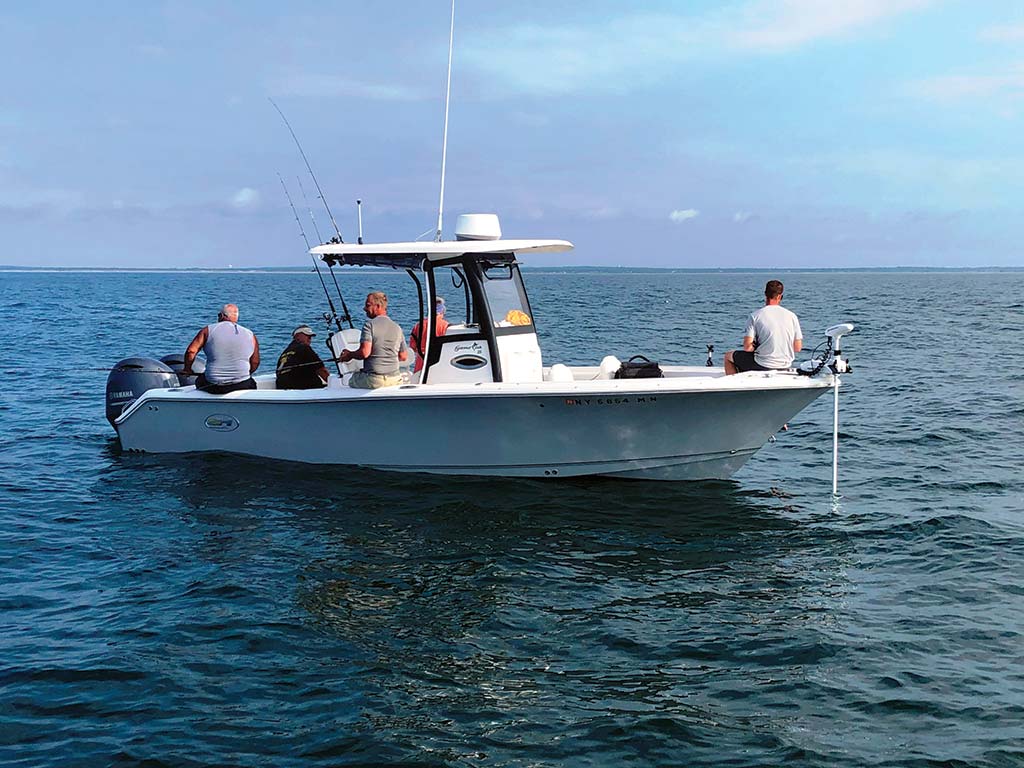
When I focus on the wreck fishing game, I will typically do so in one of two manners. The first is approaching it as a dedicated wreck fishing excursion. The outfits that I bring aboard will be chosen primarily for their ability to keep baits or jigs on the bottom in 100 to 250 feet of water and are typically conventional revolving spool reels with braided superline and wind-on mono leaders. To these we attach either jigs or two-hook/three-hook standard groundfish bait rigs, with a single overhand breakaway loop on the bottom for the sinker and more secure dropper loops spaced every 12-inches or so for the hooks. The exceptions to this rule will be the two specialized snap-jigging spinning rod outfits that I include in this mix. I have been employing these exclusively for my personal use over the past three seasons and continue to learn how they work, why they work, when they work and what jigs produce the best results, given real-time sea conditions, depths and drift speeds. Amazingly, these snap-jig spinning rigs will usually out-produce the conventional rods armed with sinkers and bait, and seem to target and catch the largest fish on the wreck.
When wreck fishing is a secondary focus to the day’s fishing, which might include shark drifting, pot-hopping for dorado or tuna trolling, the plan will be to hit a few pieces of bottom structure on the way home. Accordingly, none of the aforementioned auxiliary ground tackle setups will be included on these trips and the dedicated bottom tackle will be limited to a few double-duty conventional outfits and a snap-jigging spinner.
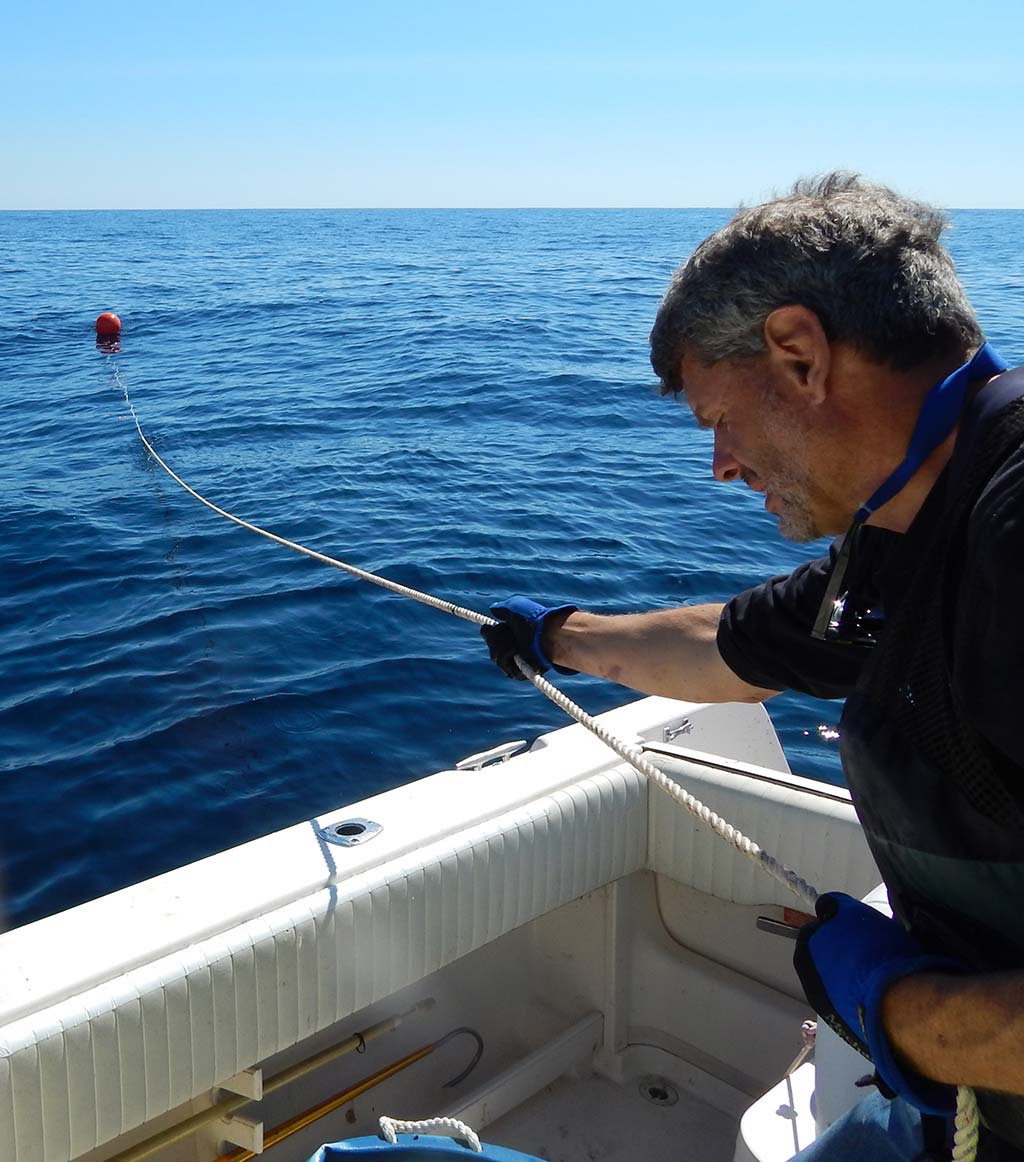
Tactics
Drifting for Groundfish: Drifting over the wreck or structure is the simplest and most fundamental technique to getting into the game and you don’t need any specialized equipment or gear. Simply plug in your coordinates, observe the structure on your echo sounder, determine where the fish are located on the structure, then expand your cartography to mark and save the wreck’s numerous structure spots. You also need to consider how the wind, waves and current will impact your drift and then steer back upwind/uptide to the spot that holds the most potential. When the bite turns off and you’ve drifted too far from the wreck, go back and repeat the process. It seems easy when you break it down by the numbers, but this is not always the case. On those calm days where you can hold over a wreck for many minutes on your drifts, it can be like shooting ducks in a barrel, but other times, the drift is too fast or the wreck is super sticky and eating your rigs or jigs on every pass. If you are jigging the wreck during your drifts, your sounder might indicate various marks holding above the structure or at mid depths. Be sure to try these target zones and you might be pleasantly surprised to hook up with predators like mackerel, bluefish, pollock, bonito, false albacore, skipjacks and small tuna that weren’t on the original menu. I have also come tight on small makos and threshers working jigs while drifting the wrecks.
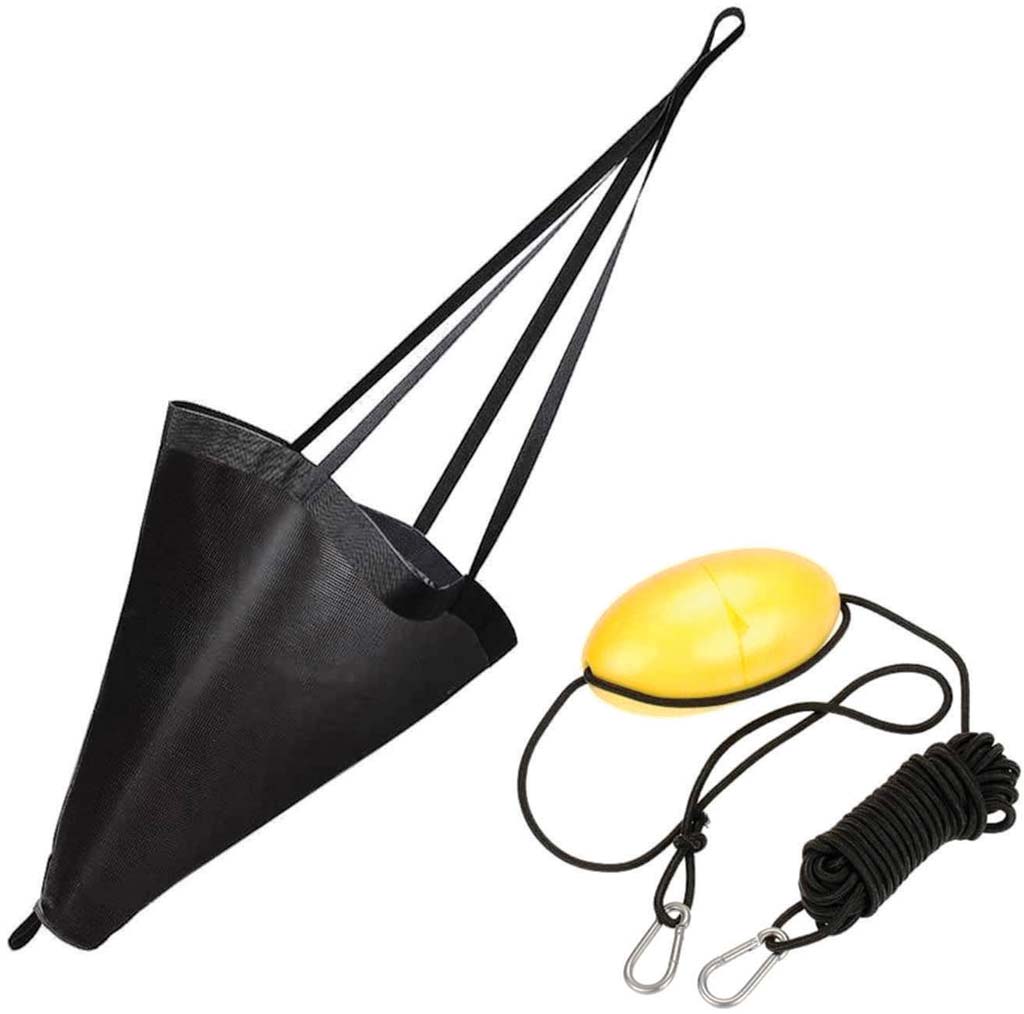
Drift Sock: This technique is very similar to the standard drifting approach, with the exception that you will be employing a drift sock (or two) that will act as a “parachute” to slow down your momentum, when even a 16-ounce sinker won’t hold bottom. A drift sock is different than a sea anchor or drogue. The former is deployed off the upwind side of the boat and attached amidships as a brake to slow your drift, whereas the latter are either set in the bow to keep your vessel pointed into the wind/sea when you’ve lost power in an emergency (sea anchor), or trailed astern in a following sea to prevent pitch-poling (drogue). The key ingredient to putting a drift sock to good use is to match its size and breaking effect to the length and weight of your boat. One size does not fit all, so try to get a drift sock that will be effective, based on your vessel’s size and weight. When deploying this tool, assign one crew member for setting and retrieving the sock after each drift and have good communications with the captain. I have been onboard vessels where this was not the case and the result was either the unattended drift sock getting entwined into the props or worse, bending or ripping a cleat out of the gunwales.
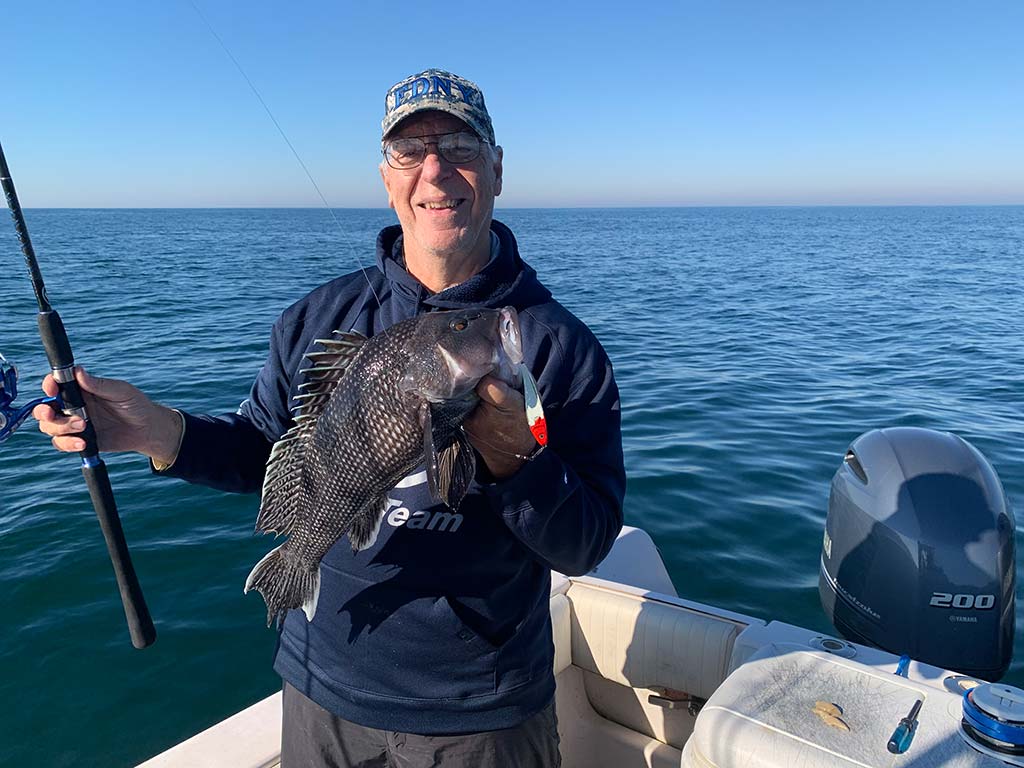
Drifting While Stemming the Tide Under Power: This is one of my favorite techniques for working a wreck and allows me to hold over productive bottom for extended periods of time. It’s a lot easier to perform this dance with two engines versus a solo powerplant, but it can be done with either power setup with practice. If sea conditions permit, you can stem the tide stern-first, which positions the flat side of your transom directly against the direction of the waves or current flow. In calm conditions this is no problem, but in agitated seas, this could be potentially dangerous, allowing water over the transom. The safer approach is to stick your bow into the wind/seas, which makes it somewhat easier to steer and hold a course, but if the wind or current is running off your quarter or beam, this will be a frustrating experience and you’ll drift off sideways from your target. Most of the major outboard manufacturers offer a proprietary joystick piloting feature that will keep you in place, once you save a GPS position and instruct it to hold that spot (Mercury Skyhook digital anchor; Yamaha Helm Master; SeaStar Optimus 360). The electronic joystick controller works with your onboard GPS to operate the engines independently, shifting gears, adding throttle and steering them in different directions to get this done. It’s a total hoot to see this at work and it’s a very effective, but expensive option.
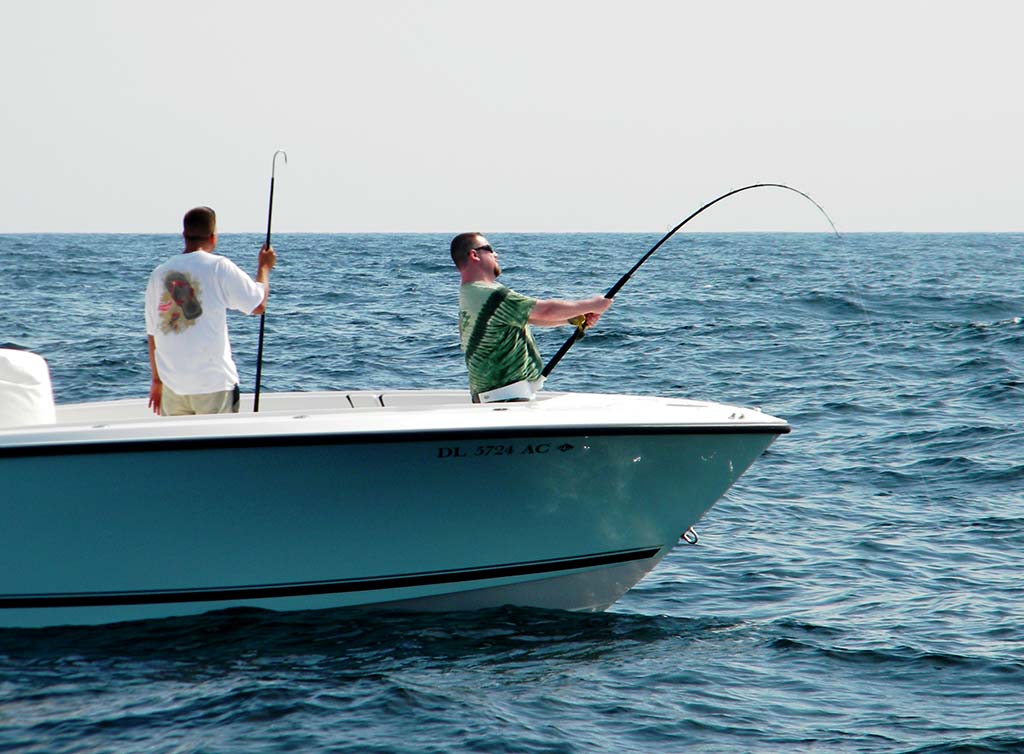
Minn Kota Terrova Riptide with Spot-Lock: If you can’t afford a 30-something twin, triple or quad outboard rig with a joystick controller, Minn Kota’s new Terrova electric trolling motor with Spot Lock might be just what you are looking for. As detailed in a recent Fisherman product review, the Terrova is a real game-changer or force-multiplier in the wreck fishing game.
The term “trolling motor” when applied to the Minn Kota Terrova Riptide is a bit of a misnomer. You can use it in the classic sense as a straight-up electric trolling motor, but this special tool does considerably more. When drifting near a wreck in moving water, the Terrova can help slow things down by providing just the right amount of reverse thrust to achieve and maintain that “perfect” drift speed to get consistent bites. If groundfish or tuna are holding around a specific piece of bottom, you can “Spot Lock” your boat at the touch of a button to employ the invisible anchor feature and keep it right where you want it. Should the fish move around during different stages of the day, the Jog feature with enable you to slide your vessel in five-foot increments north, south, east or west.
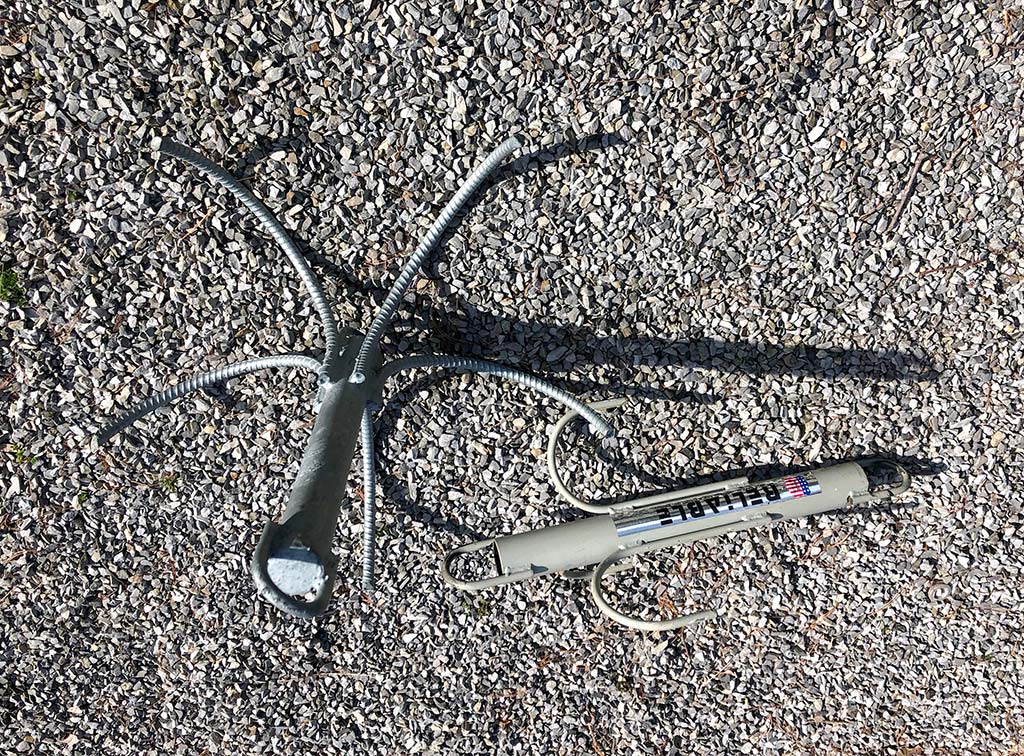
Anchoring: This technique is the time-proven, old-school approach to wreck fishing and it’s still one of the most effective ways for anglers to position their boat directly over the wreck, reef, ledge or drop off and employ an anchor to hold their ground. Four methods for holding ground over a wreck are via the single anchor; a dual anchor bridle; a single grapping hook; or a combination of a single primary anchor used in conjunction with a grappling hook to prevent swinging with the wind, current or tide when holding over a productive section of the wreck. This last option is my favorite method of anchoring, due to its inherent flexibility and it’s very efficient for setting up over wrecks and structure in deeper 20 to 30-fathom waters. Once the combo anchors are set up, you can drop back or snug up on either the grappling hook or primary anchor line, working different pieces of the structure in an attempt to locate the best concentrations of fish.
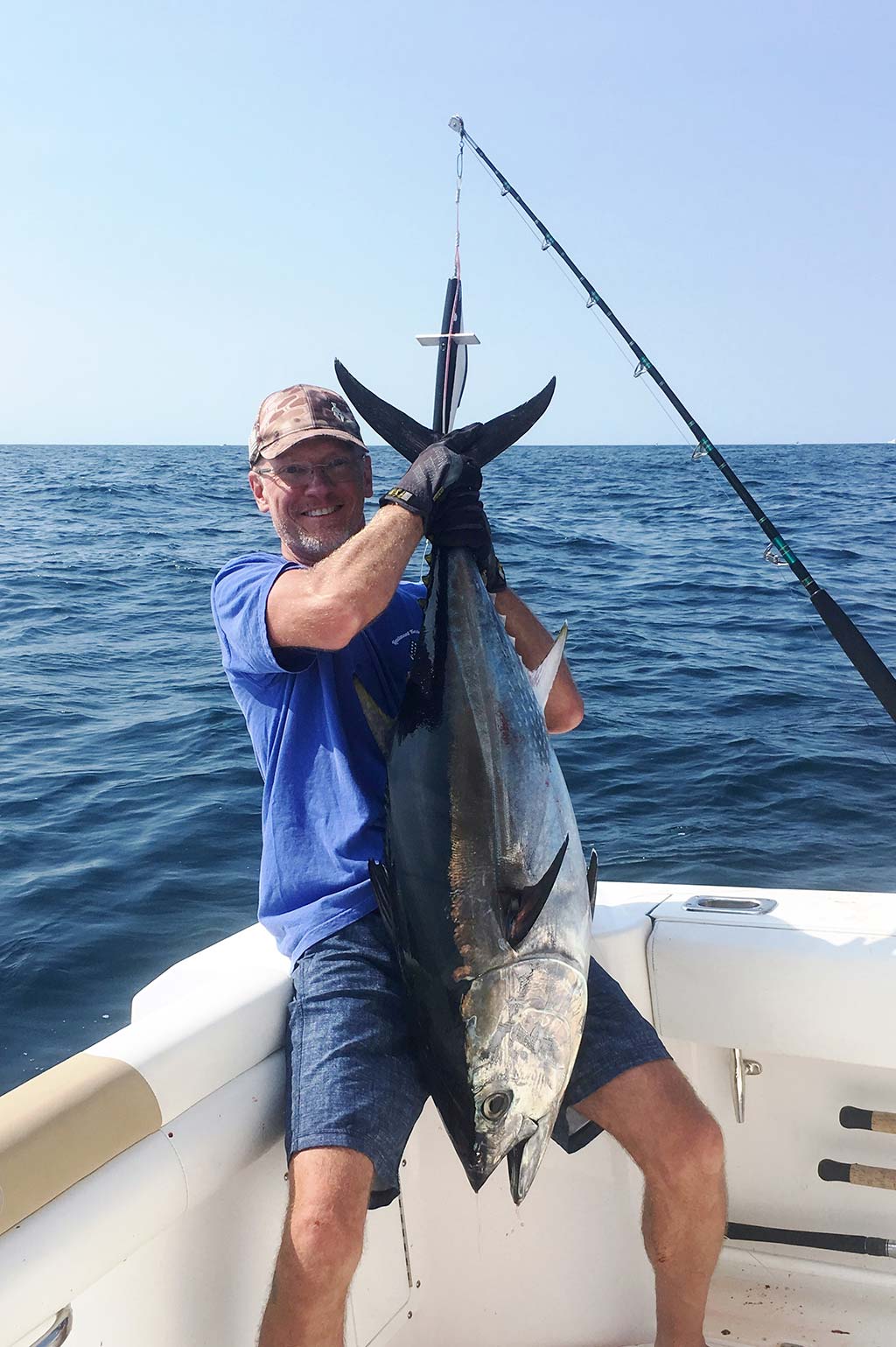
Trolling: Trolling near the vicinity of a wreck or between clusters of wrecks is one of the best methods to cover ground, find the fish and then bend the rods with consistent action. My buddy Capt. Mike Modica of Uncle Mike’s Charters executed this technique to perfection last July in the area of the Coimbra, which is a 30-fathom wreck in the shipping lanes off eastern Long Island. The day he headed offshore was totally fogged out, with the fleet setting up about three miles southeast of the wreck, all trolling danger-close to each other in 200-yard visibility with the usual noise on the VHF. Rather than join the melee, Capt. Mike steered reciprocating N/S/E/W trolling patterns in a ½ mile zone surrounding the wreck and landed five bluefins in about an hour, keeping his limit and releasing the rest. He did this while dozens of other boats sang the blues on the marine radio, lamenting that it was a fishless day. I performed the same magic trick back in September of last season with Dr. Mark Saporita on his new 35 Henriques Baby Blues, trolling a relatively unknown wreck in 200-feet of water to boat a trio of yellowfin tuna from 60-to-65 lbs. This technique really works!
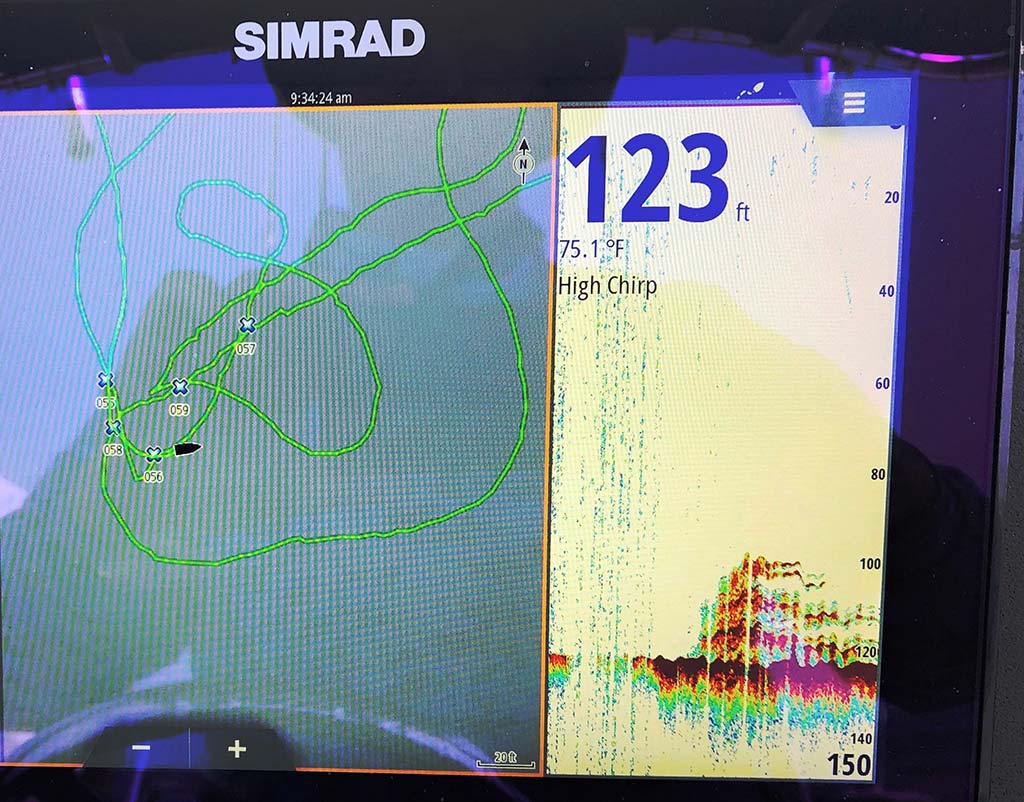
Jigging Tuna Nearby: Bait formations are seldom stationary and will flee from spot to spot as they are attacked by predators, both above (birds) and from below within the general vicinity of a wreck or submarine structure. The best way to find them is to slow troll in the wreck’s general neighborhood, looking for the telltale signs of bait clouds and hard red individual or small group echoes that can at times look like the classic “inverted V”. When you come across a potentially promising spot based on other boats bending rods, bird activity, surface commotion or readings from your sounder, put your boat in neutral, drop your jigs to the bottom and get to work.
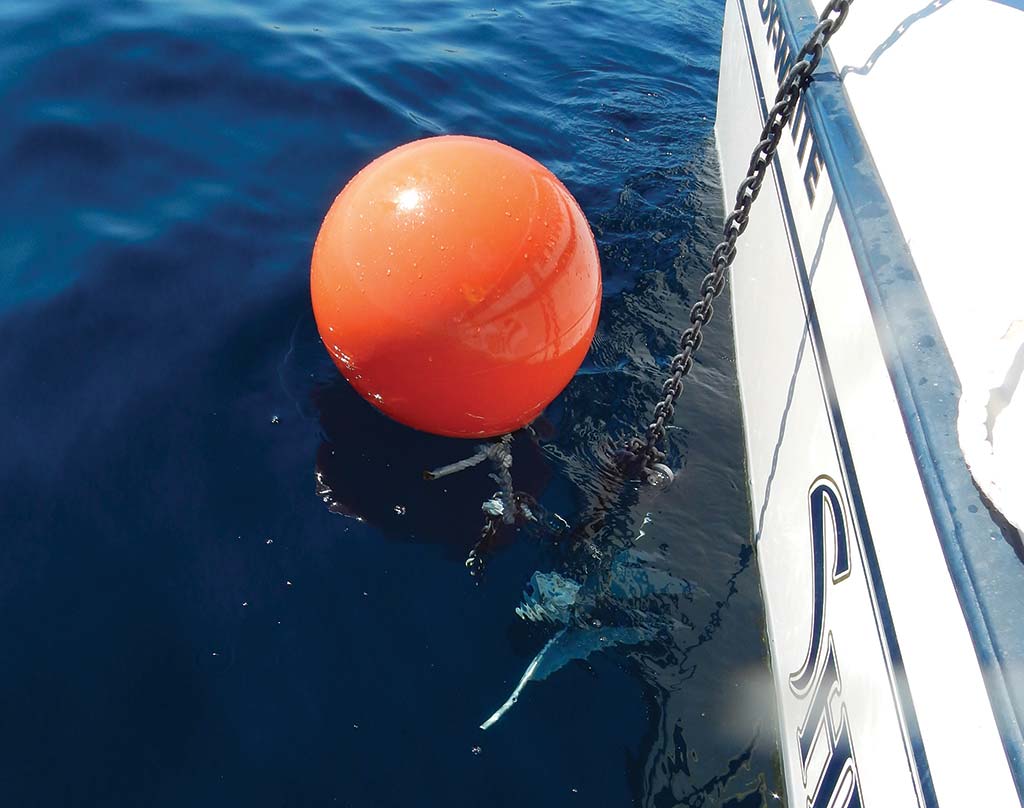
For dedicated wreck trips, I will augment the standard ground tackle on my 228 Edgewater CC (14-pound plow anchor, outfitted with 12-feet of ¼-inch chain and 500-feet of 3/8-inch rode) with an additional 200-foot extension of 3/8-inch braided nylon for those dedicated wreck fishing trips. I also add either a second complete anchoring setup, which includes a 14-pound Danforth deep-set anchor with 10-feet of 3/8-inch chain and 600-feet of 7/16-inch rode stored in a 100-pound plastic commercial fish box. A second option is a dedicated grappling hook system which includes 300-feet of 3/8-inch nylon rode and 6-feet of ¼-inch chain attached to 10-pound three-prong or four-prong grappling hook manufactured from stiff, but somewhat flexible zinc or epoxy-coated rebar, and neatly stored in an orange commercial fish basket.
Drifting Bait for Sharks or Tuna: In five decades of sharking fishing near offshore coastal waters, I can honestly say that I have landed the most, and also the largest fish drifting near various 20-to-35 fathom wrecks, from May through November. Lightning struck yet again in mid-October of last year when my son Marc bested a 388-pound male thresher shark on a lightweight Penn 20 VISX outfit in 4 to 5-foot seas. If I had a dollar for every bluefin or yellowfin that my charter crews have hooked up over the years while drifting chunk baits in the shadows of one 20 to 30-fathom wreck or another, I could probably buy a new 30-footer. This is yet another of the proven techniques that will pay dividends, especially if you have brought enough bait onboard for your trip.
Anchored Nearby Using Bait for Tuna: One of my good buddies, Capt Nick Savene of
No Time charters, is an expert at this game, which essentially takes a somewhat contrarian view of what others may be doing at a spot, especially if they are jigging and/or trolling. Capt. Nick will approach the area of a wreck that shows promise and after the tuna schools show themselves, will then anchor up and chum heavily to attract them into his freebies. I have been on his boat observing this process firsthand and have also seen him from afar, when I might have been trolling and doing nothing, while his crew were constantly bending rods nonstop on hungry tuna. It’s just another tool in the wreck hunter’s bag of tricks, so keep this technique in mind when the going is slow.
